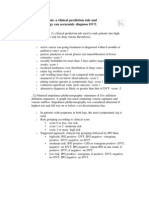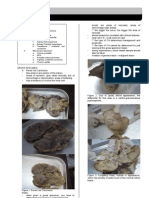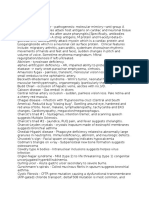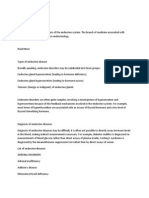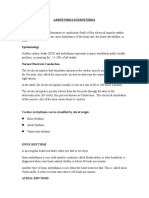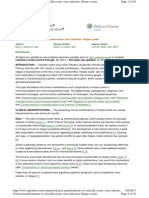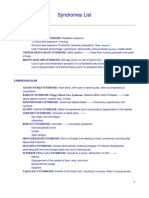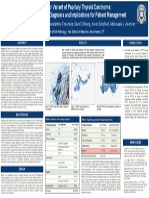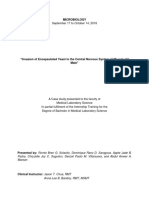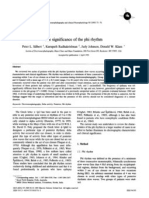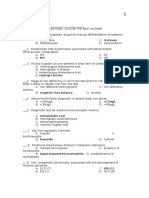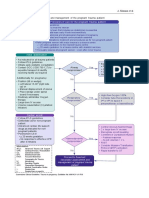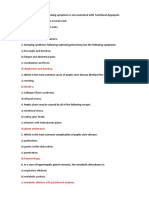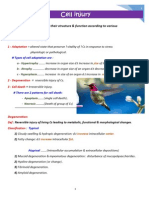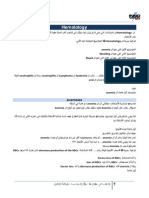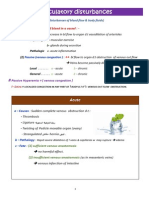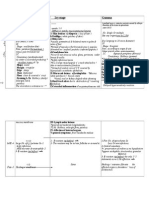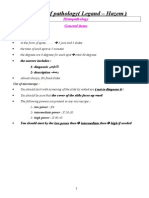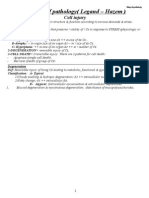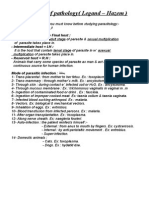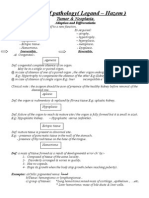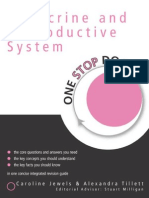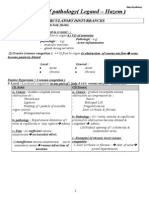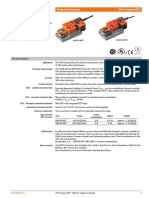By\King of pathology( Legand Hazem )
I nflammation
*** Compare acute x chronic inflammation.
*** Compare fluid exudate x transudate.
* Compare acute x chronic abscess.
*** Compare abscess x cellultis.
Give account on:-
*** Local vascular change =vascular phenomenon.
*** Role of fibrin in acute inflammation.
*** Phagocytosis. (chemotaxis)
*** Defective phagocytosis.
*** Chemical mediators of acute inflammation.
*** Abscess (pathogenesis N/E M/E Fate).
** Carbuncle.
*** Catarrhal inflammation.
*** Membranous inflammation.
*** Serofibrinous inflammation.
*** Fate of acute inflammation.
*** Granuloma.
*** Fluid exudates.
*** Role of complement in acute inflammation.
Nominate the following lesion:-
1-Swelling in subcutaneous tissue w` appear Rea-Hot-painful and contain
yellowish thick fluid.
2-Swelling due to foreign body w` is present in subcutaneous tissue for
several weeks.
. Repair
Give account on:-
*** Repair of bone fracture.
*** Repair of peripheral nerves.
*** Granulation tissue (Def N/E M/E pathogenesis Fate).
* Healing by 1ry union.
* Healing by 2ry union.
*** Complication of repair.
*** Discuss serofibrinous inflammation & How can it heal ?
*** Complication of wound healing.
*** Factors affecting repair.
*** Control of repair.
*** Compare 1ry union x 2ry union.
Cell injury
Give account on:-
*** Fatty change liver (Causes N/E M/E).
*** Amyloid liver (N/E M/E effects).
*** Amyloid kidney (N/E M/E effects).
* Amyloid spleen (N/E M/E effects).
*** Brown atrophy of the heart (Cause N/E M/E).
** 2ry hemosiderosis.
*** 1ry hemosiderosis = Bronzed diabetes.
** Necrosis (Def causes N/E M/E Fate).
* Apoptosis.
* Fat necrosis.
*** Compare mucoid x myxomatous degeneration.
*** Compare 1ry x 2ry amyloidosis.
*** Compare Sago-spleen x diffuse amyloid spleen.
*** Compare dystrophic x metastatic calcification.
*** Compare Coagulative x liquefactive necrosis.
*** Compare Necrosis x apoptosis.
Nominate the following lesion:-
1- patient e` chronic lung abscess suddenly develop heavy proteinuria and
generalized edema. What is M/E of the kidney ?
Circulatory disorder
Give account on:-
*** Chronic venous congestion of spleen.
*** Gama gandy nodules.
*** Chronic venous congestion of lung.
*** Types of thrombi.
* Causes of thrombi.
*** Cardiac thrombi.
*** Fate of thrombus.
*** Embolism.
*** Pulmonary embolism.
*** Infarction (Def N/E M/E Fate).
*** Lung infarction.
*** (N/E M/E) of spleen in case of chronic myeloid leukemia.
* Chronic venous congestion of kidney.
* Kidney infarction.
** Infarction of intestine.
*** Senile gangrene of lower limb.
*** Moist gangrene of intestine.
*** Gas = War gangrene.
*** Generalized edema. (the table)
*** Localized edema. (the table).
* 2ry shock.
* Post mortem picture of shock.
*** Compare Nut-meg liver x cardiac cirrhosis.
*** Compare thrombophlebitis x phlebothrombosis.
*** Compare thrombus x clot.
*** Compare recent x old infarct.
*** Compare wet x dry gangrene.
***Discuss the causes of edema in the lower limb?
I nfectious diseases
Give account on:-
* Toxemia.
* Bacteremia.
*** Septicemia (Def effects)
*** Septicemic spleen.
*** Septicemic heart.
* Post mortem picture of patient died from septicemia.
*** Pyemia.
** Actinomycosis.
** Compare Lepromatous x Tuberculoid leprosy.
** Compare Sarcodosis x T.B.
T.B
Give account on:-
*** Tubercle formation (pathogenesis N/E M/E).
*** 1ry T.B.
* 2ry T.B.
*** Ghon's focus.
*** Acute T.B bronchopneumonia.
*** T.B ulcer in the tongue (N/E M/E).
*** Assman simon' s focus.
*** Chronic fibrocaseous pulmonary T.B.
** Complication of intestinal T.B.
*** Nominate ( ulcer in small intestine e` undermined edge).
*** T.B lymphadenitis.
** Cold abscess.
** Tuberculoma.
*** T.B meningitis.
*** T.B Kidney.
* T.B Salpingitis = T.B of fallopian tube.
*** Pott's disease = T.B of vertebrae.
* Forms of T.B in the lung.
*** Compare military T.B x pyemic abscess.
*** Compare 1ry intestinal x 2ry intestinal T.B.
*** Compare wet type x dry type of T.B peritonitis.
Syphilis ($)
Give account on:-
*** Chancre.
*** 2ry stage of $.
*** Gumma.
*** Diffuse $ aortitis = Luetic aortitis (pathogenesis complication).
* NeuroSyphilis.
* Congenital $.
* Compare tubercle x gumma.
) Bilharziasis (B
Give account on:-
*** Polyp.
*** Sandy patches.
*** Bilharzial ulcers
*** Urogenital bilharziasis (lesion complication)
*** Intestinal bilharziasis (lesion complication).
* Bilharzial preportal fibrosis (pathogenesis complication).
*** Compare polyp x sandy patches.
*** Compare fine B. Fibrosis x coarse B. Fibrosis.
*** Compare early x late splenomegaly.
** Compare tubercle x pseudo-tubercle.
Nominate the following lesion:-
1- Soft pedunculated lesion in colon of B. Patient.
2- Spleen from patient e` hepatic fibrosis.
3- Lesion in the liver from patient e` portal hypertension.
Tumor & Neoplasia
Give account on:-
*** Hamartoma (Def E.g causes)
* Atrophy.
* Hyperplasia.
*** Metaplasia.
*** Dysplasia.
*** Direct = Local spread of malignant tumor.
*** Blood = hematogenous spread of malignant tumor.
*** Lymphatic spread of malignant tumor.
*** Local malignant tumor.
* Papilloma.
* Adenoma.
*** Grading of carcinoma.
*** Staging of carcinoma.
*** Carcinoma in situ.
*** Squamous cell carcinoma (Def Sites N/E M/E spread)
* Border calcification.
*** Adenocarcinoma (classical type) (Def Sites N/E M/E).
*** Lipoma.
*** Basal cell carcinoma (Def Sites N/E M/E spread).
* Mg melanoma.
*** Embryonal tumor.
*** Cystic teratoma = dermoid cyst.
*** Solid teratoma.
*** Precancerous lesion.
*** Oncogen.
*** Supprsor DNA Apoptotic, Antiapoptotic genes.
*** Chemical carcinogens.
*** Radiation.
*** Viral carcinogens.
*** Molecular basis of multistep carcinogens.
*** Neoplastic syndrome.
*** Para-neoplastic syndrome.
*** Tumor markers.
*** Anti-tumor mechanism.
*** Prognostic factors of Mg tumors ***Compare hyperplasia x neoplasia.
* Co-carcinogenes *Lymphangioma.*** Compare capillary x
*** Compare Benign x Mg tumor. cavernous hemangioma.
. Best wishes *** Compare carcinoma x sarcoma.
